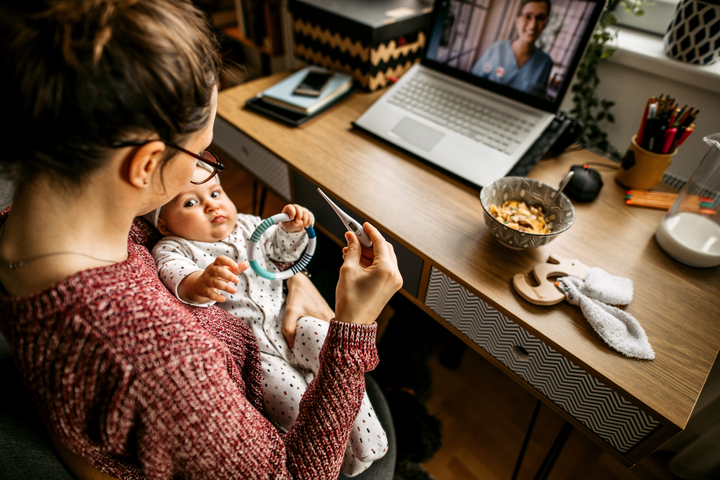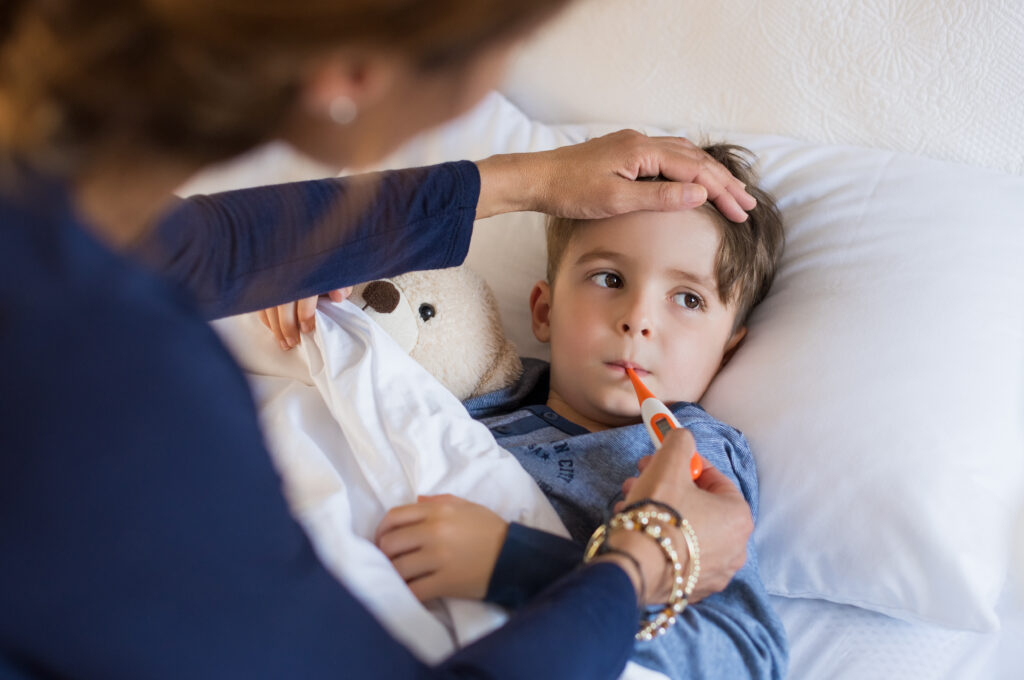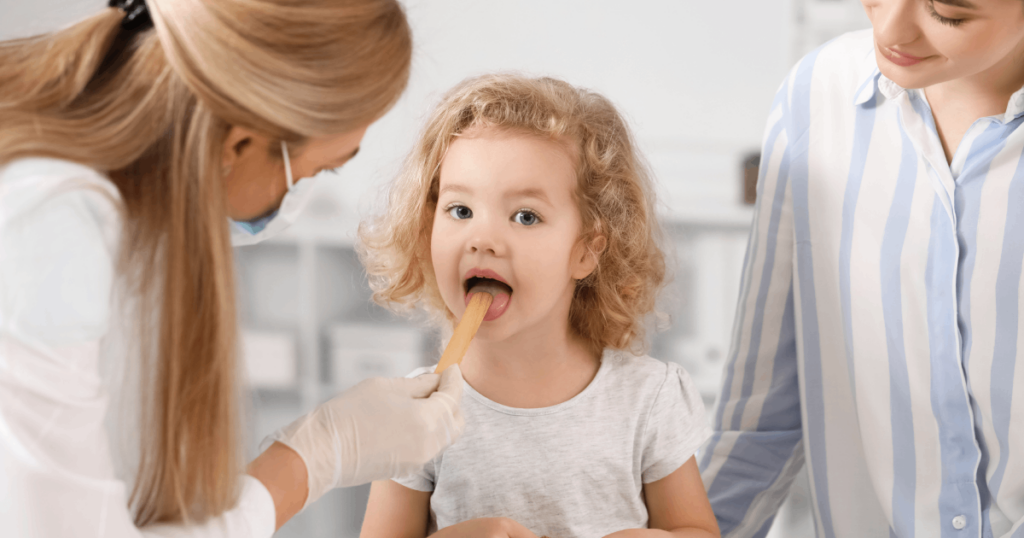How to take your baby’s temperature
Using a digital thermometer is the best way to check your child’s temperature – but did you know when it comes to taking a baby’s temperature some thermometers are more suitable than others?

Taking your child’s temperature sounds like a simple enough task, but when you have a new baby and are faced with doing it for the first time it can feel a bit daunting. All sorts of questions can start to pop-up into your head such as “When should I check my baby’s temperature?”, “What thermometer is best?” and “What’s a normal temperature?”.
It’s always a good idea to be prepared (before you are in the ‘heat’ of the moment) so here’s some useful information on thermometers and taking your child’s temperature – remember if you have any concerns about when to take your baby’s temperature or how to use a thermometer properly your doctor, nurse or pharmacist can help – just ask.
When to take your baby’s temperature
It’s a good idea to check your baby’s temperature if:
- Their skin feels hotter than usual when you touch their forehead, back or stomach
- They feel clammy or sweaty
- Their cheeks look flushed.
A raised temperature is an important sign that a child may have an illness – other signs to watch out for include:
- They are irritable or crying
- They refuse to drink
- Vomiting
- Being more sleepy than normal
- Shivering
- Being in pain.
If your baby is under 3 months old and has a temperature over 38oC they should see a doctor or be taken to a hospital emergency department straight away – even if there are no other signs of illness – as it may be difficult to tell if anything serious is causing the raised temperature.
Baby Temperature Range
A baby’s body temperature naturally varies depending on things such as their age, how their temperature was taken and even the time of day can affect the reading.1 But in most cases, a ‘normal’ baby temperature will be between 36.5C and 38C.
Getting to know your baby’s normal temperature range can make it easier to tell when they have a fever:
- The temperature for a newborn baby can range from 35.5C to 37.9C
- Pre-school children tend to have higher body temperatures than older children – peaking in healthy children when they are around 18-24 months of age (when their body temperature can get as high as 38.3C)
- Body temperature is usually lowest at night and early morning, peaking in the afternoon.
What is considered a fever?
Temperature readings can vary depending on which part of the body is used; however, the below readings provide an indication that your baby may be running a fever.
A child is considered to have a high temperature or fever if:
- The ear or temporal artery (forehead) temperature rises above 38C
- The oral temperature is above 37.8C
- The armpit temperature is above 37.2C
Types of thermometers
You can easily buy a thermometer either online or at your local pharmacy or supermarket – with lots of different types to choose from – but it is important to look for one that is suitable for the age of your child and to follow the manufacturer’s instructions, so you can get an accurate temperature reading.
Different types of thermometers measure temperature in different ways and the results can vary between thermometers and what part of the body is used.
Most thermometers we use nowadays are digital thermometers and include:
- Digital probe thermometers – these are probably the most common and accurate type of thermometer and are used to measure body temperature in different ways including:
- Axillary (armpit) readings – this is considered the most reliable method for taking a baby’s temperature. It is the recommended method for children under 5 years and is where the thermometer probe is placed under the child’s armpit
- Oral (mouth) readings – here the probe is placed in the mouth under the tongue and can be used for older children and adults.
Taking a baby’s rectal temperature with a digital probe is not recommended because of the risk of damaging the lining of the child’s rectum.
- Digital ear thermometers – these thermometers read the temperature inside the ear and although this is a quick and easy method it can be difficult to get an accurate reading from a baby’s small ear hole and are not recommended for children under 6 months of age.
- Digital temporal artery (forehead) thermometers – these use an infrared sensor to detect the temperature of the temporal artery on your baby’s forehead. These thermometers are probably the easiest to use (and with non-touch methods you don’t have to wake a sleeping child to check their temperature!) but their readings can be inaccurate and are not recommended.
Other types of ‘thermometers’ such as fever strips, digital pacier thermometers or smartphone apps are not recommended as they aren’t very accurate. Old-fashioned liquid or mercury thermometers are also not recommended for babies or children because of safety issues.
What to remember
Fevers in children are a fact of life and are one of most common reasons parents take their children to see a doctor.
While it is unlikely the fever itself will cause any long-term harm, a high temperature usually means your child is unwell. You can take your child’s temperature as often as you want to (usually every 3-4 hours) – but it is also important look for other signs of illness as well.
Contact your doctor or go to a hospital emergency department immediately if:
- Your baby is under 3 months old and has a temperature of 38oC or higher
- Your baby is 3 to 6 months old and has a temperature 39oC or higher
- Your child has as a high temperature and displays other signs of illness
- Your child’s high temperature doesn’t improve within 48 hours
ALWAYS READ THE LABEL. FOLLOW THE DIRECTIONS FOR USE. INCORRECT USE COULD BE HARMFUL. IF SYMPTOMS PERSIST, TALK TO YOUR HEALTH PROFESSIONAL.


